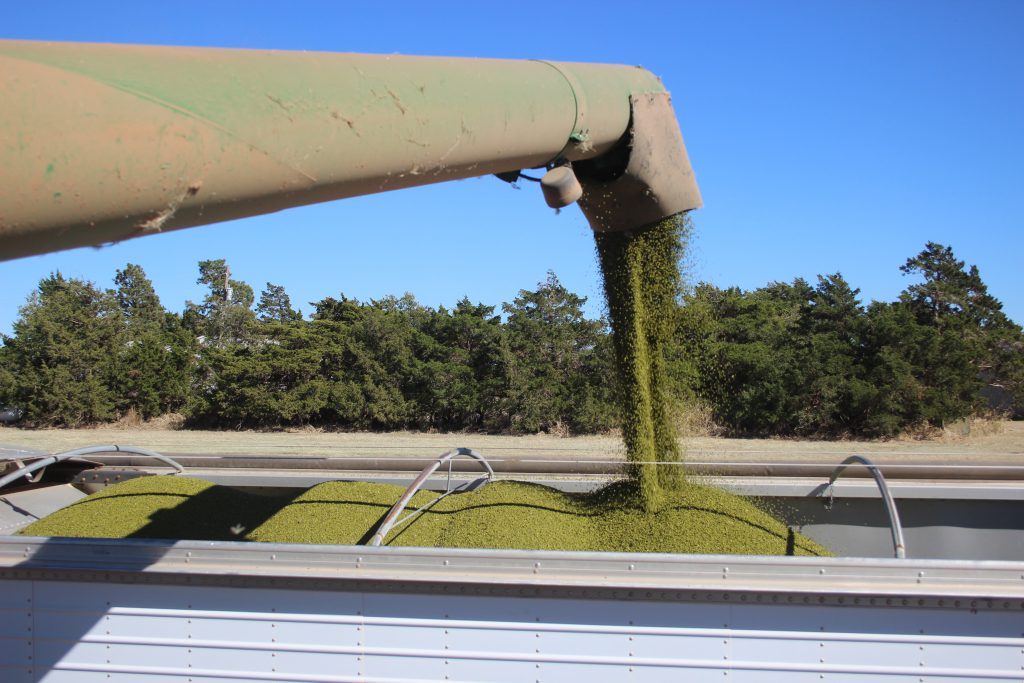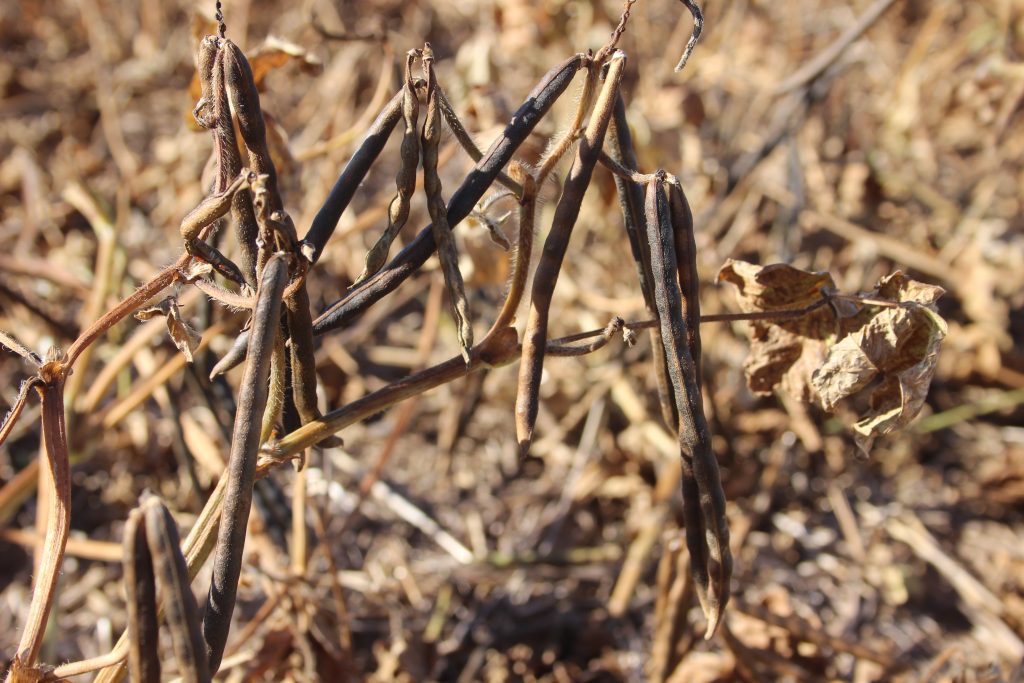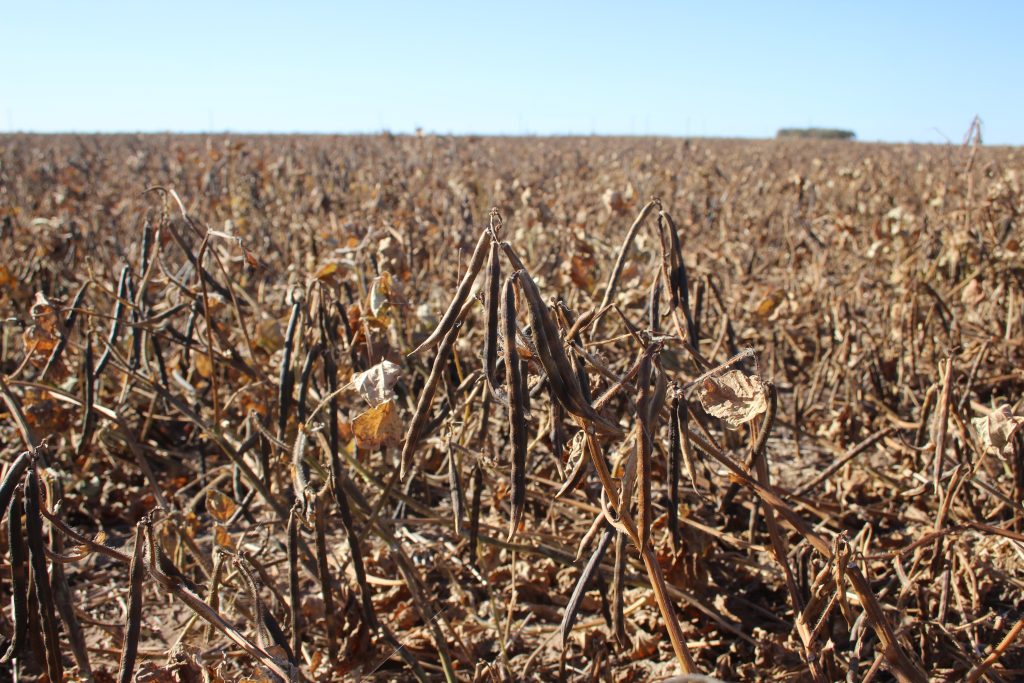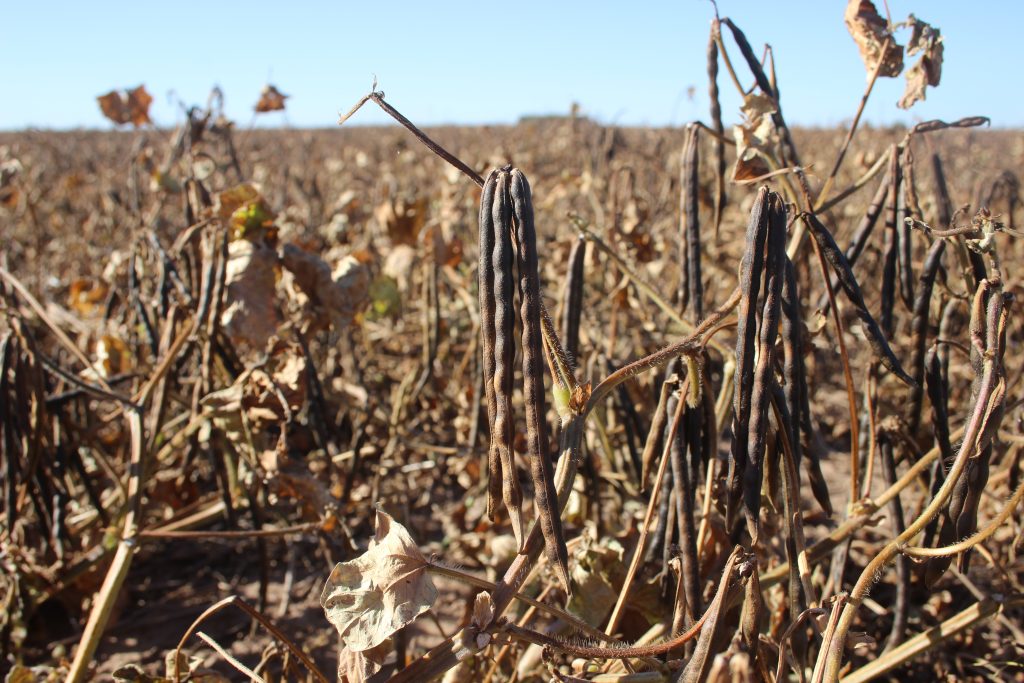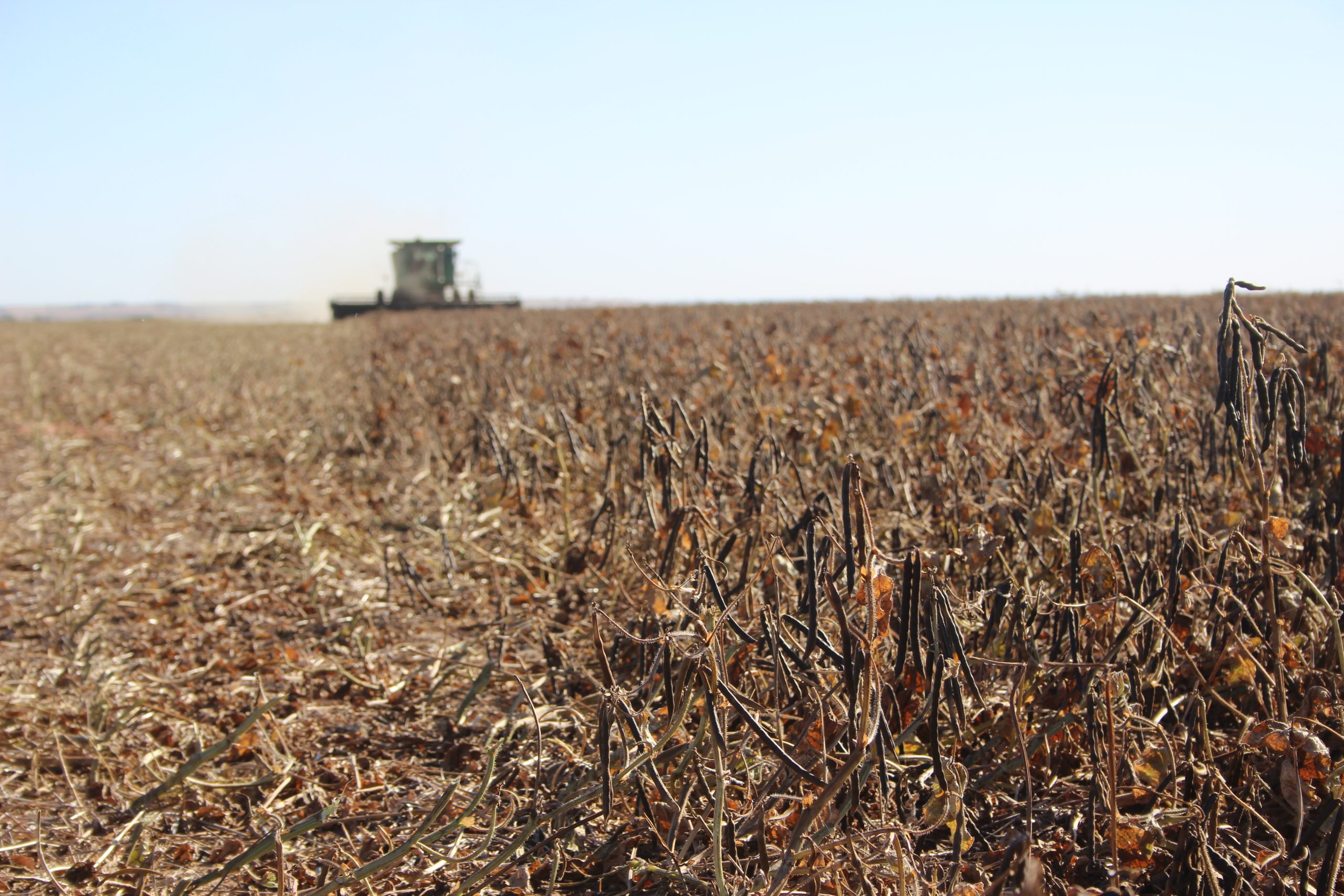The combines are out in the fields for fall harvest across Oklahoma, but they are not just cutting sorghum, corn and soybeans. Many farmers in the Sooner State are harvesting mung beans as well. Although they are not as recognizable as their soy cousins, mung beans have been eaten for centuries.
They are in the legume family, are high in antioxidants, valuable nutrients and are considered one of the best plant-based sources of protein. The seeds and sprouts are used for human consumption, and they are a valuable source of protein in areas where meat is not readily available or as a vegetarian protein source. The largest market for mung beans is in Asia, where they are often made into flour and incorporated into recipes or sprouted for consumption.
Mung beans are a short-season crop, which can be double-cropped with wheat or other grains. A mung bean crop takes between 75 to 100 days to mature and most are planted with a drill, although row planters are sometimes used. One benefit of planting this crop is that the seed is inexpensive and it does not need many inputs for a successful harvest. Mung beans are being planted more and more each year in Oklahoma because the environment is perfect for this bean that is drought tolerant and loves a sandy loam soil.
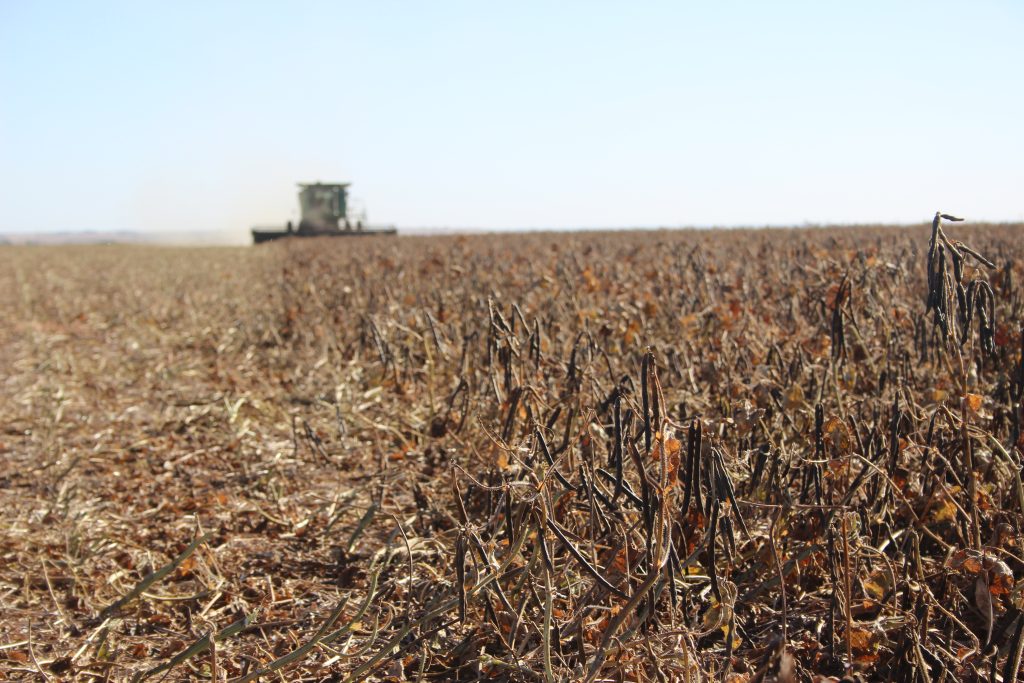
Harvest in Central Oklahoma
The pictured dryland field is located in Central Oklahoma and was planted July 25 and harvested October 20. This variety of mung bean is called Kimlee and is bred through a supplier in South Korea and distributed by one seed dealer, JLee Co., located in Hennessey, Oklahoma.
“We’re the only company in the nation growing a 75-day mung beans—it only takes 75 days until maturity and they’re ready to come out of the field,” said Tyrone Wilson, owner at JLee Co.
To cut as low to the ground as possible, a flex header was used on the combine that harvested this crop. This particular field yielded over 1,000 pounds per acre on average. It had a seeding rate of 15 to 20 pounds per acre and the beans harvested from this field will be exported to the Republic of South Korea.
“Averaging over 1,000 pounds to the acre is really unheard of in dryland,” Wilson said. “Those are irrigated numbers in a dryland situation.”
Mung beans prefer a light to medium textured soil so they can get their roots off to a good start after planting. Adequate moisture and a strong stand are imperative because they are not in the ground for a long period of time. This particular field received about four to five inches of rain between planting and harvest. Although it went through some dry periods, the abundant moisture received this summer allowed the ground to retain enough moisture to carry the plants through to a successful harvest.
“The rain shut off in early July and we didn’t have any rain in August,” Wilson said. “And yet these beans, through the heat and drought and turned into a great crop.”
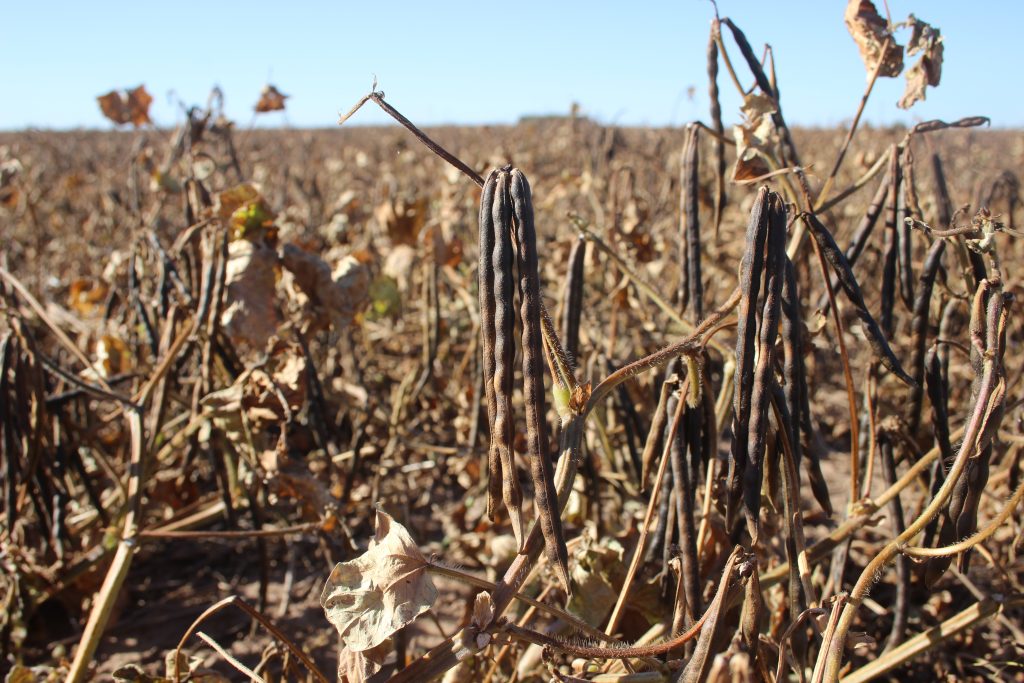
Most farmers sign acreage contracts for mung beans with a set price at which the farmer agrees to sell their crop back to their end-user. This ensures the farmers will receive a fair price and a guaranteed market for their mung beans at harvest time.
J Lee Co. will export 1.5 million pounds of mung beans to South Korea this year. Wilson said he is looking forward to 2027 when the free trade agreement between South Korea and the U.S. will expire and the U.S. will be able to export an unlimited amount of mung beans to the country. Wilson said J Lee Co. had 7,000 acres of mung beans planted across Oklahoma this year, but the demand is expected to increase in the future and more farmers will need to start growing mung beans to meet needs.
“Oklahoma is becoming the mung bean capital of the world because of our growing conditions,” Wilson said. “From a financial standpoint, what I’m trying to convey to our growers is that this is a smart double crop that can truly add revenue to your farm. I will put this bean up against cotton or soybean because of the duration that is in the ground. You can make that financial commitment and still get it out of the field and plant your next crop because you only need 75 days for this bean.”
Lacey Vilhauer can be reached at 620-227-1871 or [email protected].
